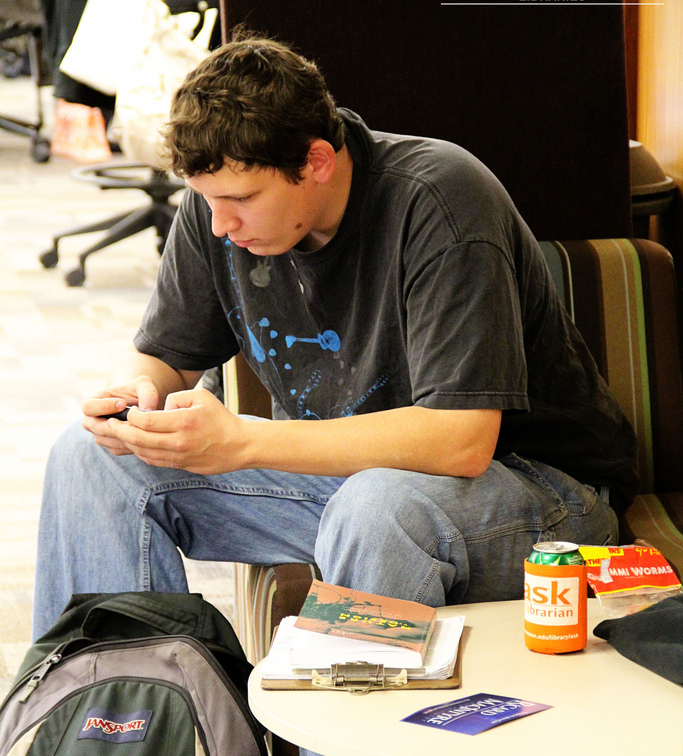View Session Details and Presenter’s Bio.
Photo by clemsonunivlibrary, Flickr.
“[If you are above a certain age] you feel like an immigrant in a place where your children are natives.” – John Barlow, Grateful Dead lyricist.
In the year 2000, 38% of students did not have cell phones. Today, that figure is 0%. Meanwhile, 38% of students consider their cell phones as important as their cars. Clearly, mobile devices are a significant part of students’ lives. They want mobile. One might even say that students need mobile.
But we are not our students. And neither is our senior administration. So why are we the ones determining what is going to be a part of our mobile applications? Maybe it’s time to start asking our users what they want. At the Ohio State University, they did just that.
They started with a survey. More than 1,000 students were asked: what do you want in an app? The students identified five things they wanted: access to their schedule, grades and one-card ID balance, plus maps and bus routes.
OSU integrated these options into their mobile application. They also added some fun enhancements. A Nearby application shows a key building based on the GPS location of the device. If students click on the “Nearby” button, they will find a list of–unsurprisingly–things that are located nearby. OSU also enhanced their map application by providing a walking tour of campus that prospective students, parents and others could use to explore the OSU campus.
It’s live. Now what?
Asking students BEFORE developing an application is great, but how do you know if you met their expectations? Or, perhaps even more important, how do you stay on top of their changing needs? OSU has put several things in place to continue to gather feedback. First, after developing a beta version of the app, they demoed the app at a public event and invited students to offer feedback. Insight also came from watching students use the app for the first time, as painful as it is to watch. Students also can — and do — submit their feedback and suggestions using the application. In fact, the feedback button is prominent on the app’s home screen.
Tips for Success
What tips does the OSU team have for those of us working on mobile applications?
- Don’t get bogged down in the details
- Don’t wait for total consensus; you will never get it
- Don’t silo yourself; involve other departments as you build
- With Android, buy as many different types of devices as possible; not everyone will have that fancy phone you have and what you build for Shiny Device 3000 may not work on Kind of Rusty Device 1000
- Raise awareness and get buy-in from senior management
- Take advantage of geolocation; our campuses are big and a real benefit to users can come from offering them information about what is nearby
The takeaway: Mobile is more than just an application; it is a ongoing, collaborative project that involves not just the people developing it and the people providing content, but also the end users.
To check out OSU’s mobile app, visit http://go.osu.edu/osumobile.


3 replies on “What Students Want in Their Mobile Application #heweb11”
[…] #aps3 – What students want in their mobile application […]
[…] LINK write-up | Presenters: Glenn Donaldson, James Burgoon and Stephen Fischer of The Ohio State University. “Technology staff at The Ohio State University has formed an unprecedented partnership with students to deliver a mobile application that meets students’ needs. Three technology workers from different department with very different roles will discuss their process of surveying students to understand their needs, working with them to test the application, and using them for development work. The most important new feature on the recent OSU Mobile launch was the ability for students to look up grades and schedules in real time. We’ll discuss the usage and popularity of these and other features, and plans for future phases. We’ll share the technologies used, some of the challenges on a large campus, and how involving students can make things run more smoothly than one might expect.” […]
[…] #aps3 – What students want in their mobile application […]